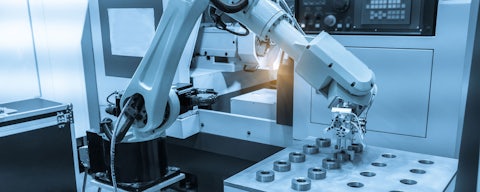- Blog
Think outside the bot: use the right tools during your automation journey

Marshall McLuhan: “We shape our tools, and then our tools shape us."
Almost everyone understands the importance of using the right tool for the job at hand. However, RPA software providers may give the impression that bots are the right tool for all automation challenges. This is analogous to the adage: “If you are a hammer, everything looks like a nail.” This post describes how business leaders must think outside the bot and ensure the right tools are used to avoid wrong turns or delays during your company’s automation journey.
Challenges for RPA to scale, achieve ROI
As described earlier, RPA bots are a great tool for automating basic, rules-based processes that use only structured data. However, real-world business processes are often much more complex. They require different tools with greater intelligence and the ability to handle unstructured data. For example, invoices and purchase orders, commonly used business documents, use a variety of formats and unstructured data—which is problematic for RPA.
Gartner confirms this challenge: “Through 2021, 40% of enterprises will have RPA buyer’s remorse due to misaligned, siloed usage and inability to scale.” They say that enterprises who “underestimate RPA complexity, potential misuse, and multidisciplinary coordination needed among business units, IT, security and assurance functions are experiencing significant missteps, lack of ROI, and/or high failure rates in deploying and scaling RPA.”
Further, HfS research indicates “Only 13% of enterprise RPA initiatives are scaled across the entire organization. In other words, until now, RPA projects have been nascent and exploratory.” HfS says “RPA is murky and hard to execute and finesse and requires knowledge of enterprises’ legacy systems. To ensure RPA makes a tangible difference to a way a company does business, process owners must bring their knowledge and experience to the table to help with process mapping and beyond.”
Net/net: enterprise business processes are complex and dynamic combinations of manual processes, unstructured data, legacy system integration and human intelligence. These real-world processes require a variety of tools and domain expertise to which tool to use and how to best use it in a specific situation.
Optimize your journey by leveraging new tools
A platform-based approach that leverages multiple technologies, including RPA for simple rules-based processes using structured data, is required. Digital business platforms enable RPA and other Intelligent Automation, Analytics and AI technologies, all needed tools for different business problems. There is no “one size fits all." Business leaders must deliver actual business ROI vs. invest in what should deliver.
To automate a broader range of real-world processes, new tools, such as pre-trained AI accelerators—need to be considered. Let’s begin with a definition: pre-trained AI accelerators are modular, purpose-built services which do a specific task, like reading an invoice or extracting critical information from a purchase order. Additionally, they can be trained to learn and understand unstructured data. Relative to RPA bots, pre-trained AI accelerators offer the potential to automate more work elements within complex, real-world business processes.
For example, imagine a manual process where an employee received an email, read it, extracted a pdf document, realized the document was an invoice, looked up information regarding the invoice on a third-party system, and then cleared the invoice to be paid. An RPA bot can provide some level of automation; however, if an unrecognized invoice came into the system (i.e., unstructured data), the workflow will break… and the “RPA wall" will be hit.
AI accelerators enable the new invoice to be understood, all pertinent data ingested from it and the workflow would continue automatically. Further, AI accelerators automatically learn about new document types and just deal with them without human intervention. They enable breakthroughs in real-world automation project ROI.
Pre-trained AI accelerators are a new automation tool which leverages AI technologies and domain knowledge to automate specific business process tasks. With their ability to handle unstructured data and work in non-rule-based processes, AI accelerators can help your company get beyond the “RPA wall."
Next steps for business leaders
- Ensure your team is leveraging expertise from service providers who have the required domain knowledge and Intelligent Automation tool box to successfully guide your enterprise during your journey.
- Evaluate a platform approach leveraging curated best-in-class technologies and third-party tools which can be brought to bear for the appropriate task.
- Create a center of excellence and cross-functional team—across business, IT and HR—to get broad buy-in and plan for the needed change management process.
In conclusion, business leaders need a wider lens to ensure their teams select the right tools to not only maximize ROI and achieve business objectives, but also help their employees to realize their potential. The future of work is humans and machines working together to achieve more than either could separately. As Marshall McLuhan recognized, humans shape our tools and, in turn, they will shape humans—by freeing us to focus on more enjoyable, higher value-added work. As a result, we become more fully human.
